#cultural mosaic
Explore tagged Tumblr posts
Text
A View from My Window: A Digital Dance of Souls and Stories #writeapageaday @Blogchatter
A View from My Window: A Digital Dance of Souls and Stories #writeapageaday @Blogchatter #DigitalDialogue #SoulfulConnections #VirtualJourney #AuthenticConnections #LifeReflections #CulturalTapestry #DigitalPoetry #LetterWriting #HumanExperience
In the digital expanse, I wander with purpose,Seeking the profound amidst the superficial circus.A yearning deep, a quest for connection,To explore the human essence, a shared reflection.Amidst the noise of fleeting interactions,I crave the art of letters, sincere transactions.In this realm where shallowness prevails,I yearn for substance, where authenticity sails.Through the pixels, I extend an…
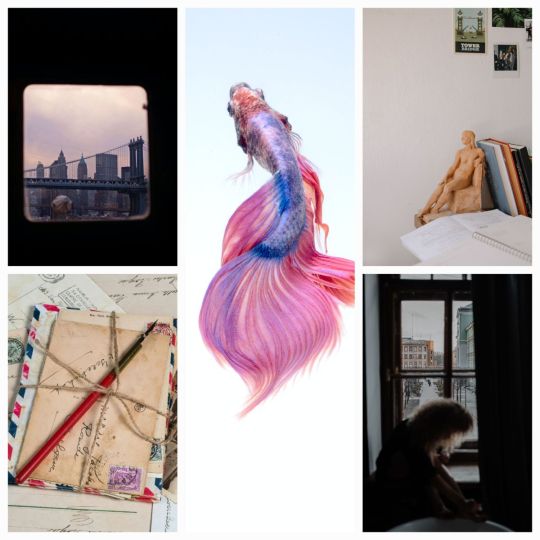
View On WordPress
#authenticity#Cultural Mosaic#Digital Expanse#Digital Tapestry#Human Connection#Journey#Letter Writing#Life&039;s Chapters#reflection#Time&039;s Reflection#Virtual Dialogue#Window View
0 notes
Text
#cultural mosaic#w. michael gear and kathleen o'neal gear#where the basilisk dreams#anasazi mysteries
0 notes
Text
Multicultural Remembrance
Reblogged from 10 November 2016 Remembrance Day. Source: Silverleaf at Jubilee Newsletter The day after the US election I had a terrible hangover and I hadn’t even been drinking. I had waited and waited for something, anything, to happen for a different outcome, but in the end all I got was a night with too little sleep. So it was with a fuzzy head and a bad temper that I got up and dressed in…

View On WordPress
#cultural mosaic#Edmonton#getting along#immigrants#multiculturalism#neighbourhood kids#refugees#Remembrance Day#school children#teachers
0 notes
Text










The gorgeous Bird Mosaic from the so-called House of the Birds in Italica, Spain, features 35 different species of birds.
#ancient rome#roman empire#ancient history#ancient art#ancient culture#ancient civilisations#hispania#roman hispania#italica#mosaic#house of the birds#bird mosaic#birds
1K notes
·
View notes
Photo
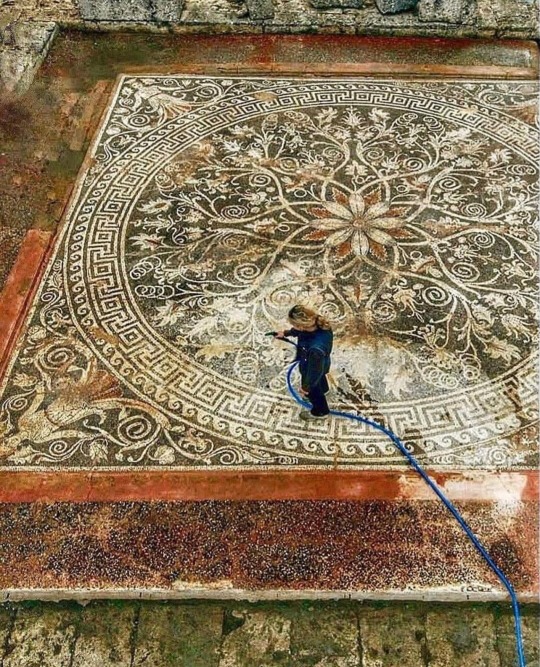
An elaborate pebble mosaic from Aegae Palace in Vergina, Macedonia, Greece. Built by Philip II (c. 359-336 BC), father of Alexander the Great, it is one of the largest and most spectacular Hellenistic mosaics known.
photocredit: 17th Ephorate of Prehistoric and Classical Antiquities, Greece
#greece#europe#ancient greece#ancient greek art#mosaic#aegae palace#macedonia#ancient mosaic#archaeological sites#vergina#imathia#mainland#greek culture#greek history
2K notes
·
View notes
Text
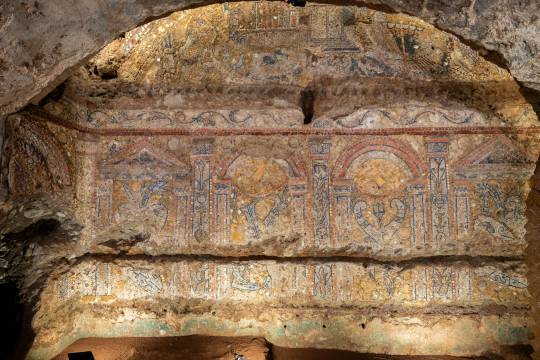
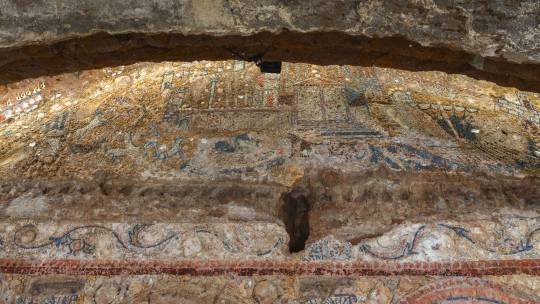
‘Incredible’ Mosaics Were Found in an Ancient Luxury Home in Rome
Italy’s Culture Minister Gennaro Sangiuliano has called the works “an authentic treasure.”
Researchers working in the Archaeological Park of the Colosseum in Rome have shared their discovery of luxurious mosaic-tiled rooms found in an ancient home on the site, which they believe may have belonged to a Roman senator. Created from shells, glass, white marble, and Egyptian blue tiles, the mosaics have been described by Italy’s Culture Minister Gennaro Sangiuliano as “an authentic treasure”.
The “rustic” mosaics, found on the grounds surrounding the Colosseum in the heart of the city, date to the late Republican Age, in the last decades of the second century B.C.E., and show a series of figurative scenes. They once decorated a townhouse, or domus, owned by an upper class citizen. Italy’s Ministry of Culture have said that “due to the complexity of the scenes depicted” and their age, the mosaics are “without comparison.”
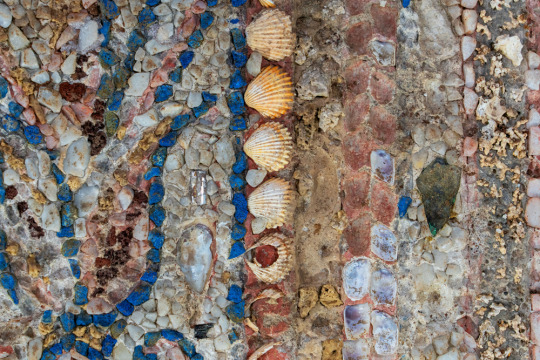
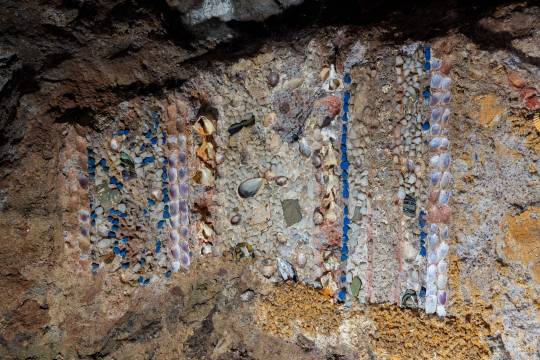
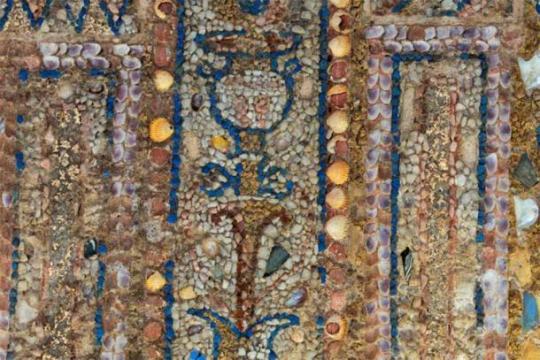
One mosaic depicts a coastal city with towers and porticos, with three large ships floating by on the ocean waves. The culture ministry believes this could be a reference to naval victories achieved by the owner of the home, which is believed to have been a Roman senator. This is supported by historical sources describing the area as having been occupied by such high-ranking members of society.
The decorated walls were likely located in the home’s dining rooms, where luxurious banquets would be hosted, and guests at these events were likely wowed with “spectacular water games,” according to the culture ministry, based on the presence of lead pipes set into the walls.
In the reception room, an extremely well preserved decorated stucco featuring landscapes and figures was also discovered. Other designs include vines and lotus leaves flowing from vases, musical instruments, and tridents.
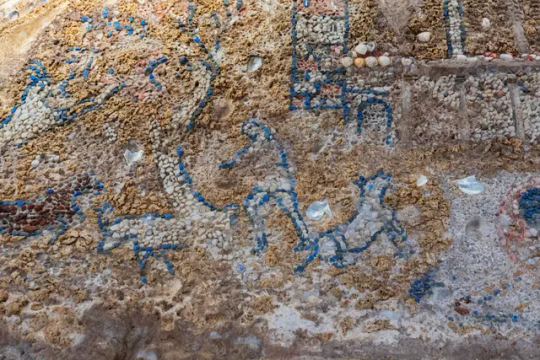
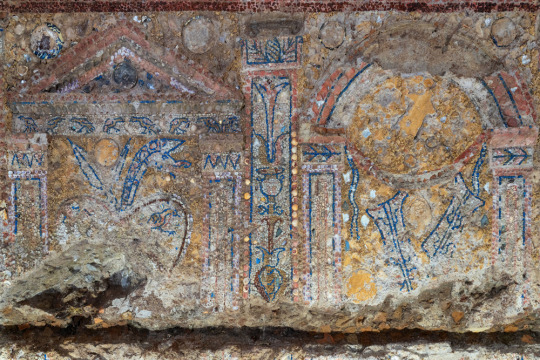
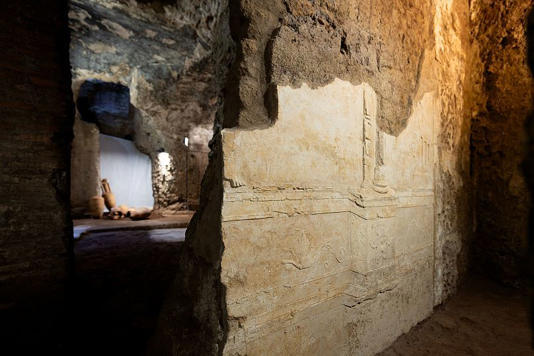
The mosaic walls were first discovered near the Colosseum in 2018, but excavation at the site will continue into 2024, and more rooms could be discovered. Alfonsina Russo, the Director of the Archaeological Park of the Colosseum, has said that once the domus is full uncovered, “we will work intensely to make this place, among the most evocative of ancient Rome, accessible to the public as soon as possible.”
By Verity Babbs.
#‘Incredible’ Mosaics Were Found in an Ancient Luxury Home in Rome#Archaeological Park of the Colosseum#Late Republican Age#second century B.C.E.#mosaic#roman mosaic#ancient artifacts#archeology#archeolgst#history#history news#ancient history#ancient culture#ancient civilizations#ancient rome#roman history#roman empire#roman art
1K notes
·
View notes
Text

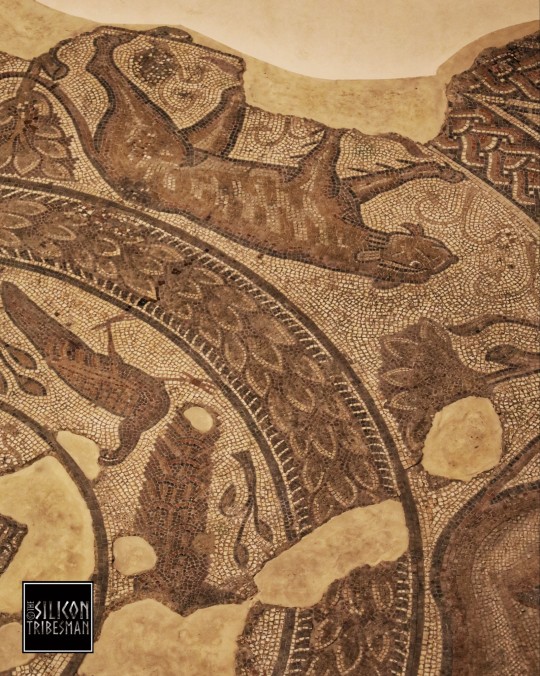

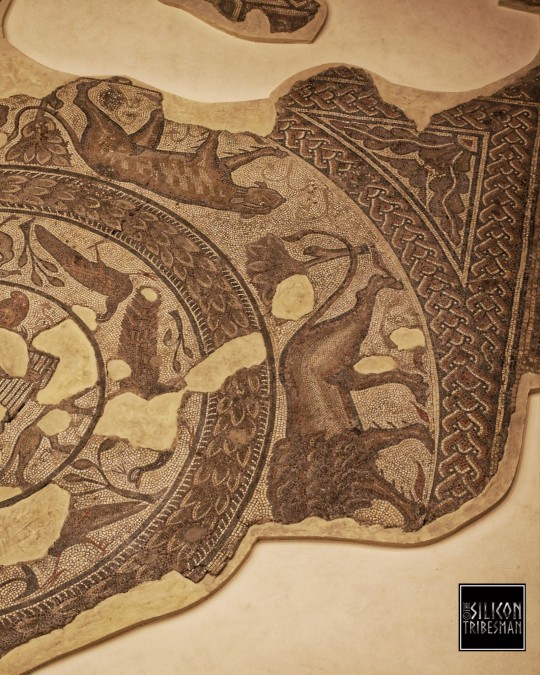
Roman Mosaic Pavement Section, Corinium Museum, Cirencester
#Roman#romans#roman mosaic#roman britain#roman empire#roman symbols#tiger#lion#archaeology#ancient craft#ancient cultures#ancient history#Corinium#Cirencester#relic#design#mosaic
497 notes
·
View notes
Text
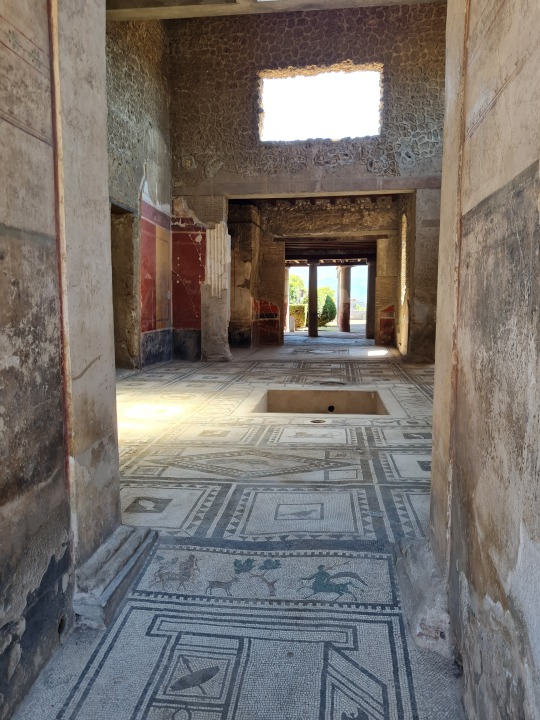


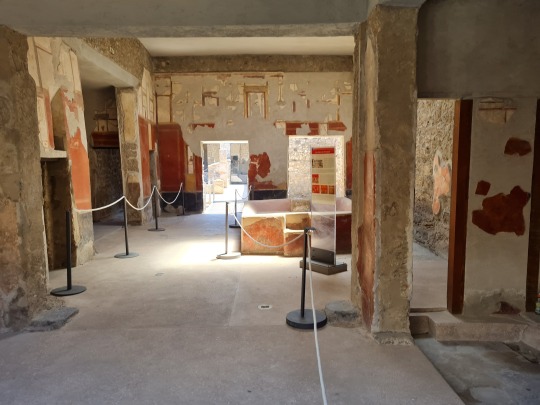
The ancient city of Pompeii, Italy
On the first photo is the house of Paquius Proculus. On the last photo is the fullonica of Stephanus, a laundry worker who used the house as his workshop.
#pompeii#ancient rome#mosaics#roman art#roman history#ancient#ancient history#antiquity#archaeology#ancientmonuments#vesuvius#ancient art#history#architecture#culture#art#art history#travel#travel photography#traveling#photography#photographers on tumblr#explore#wanderlust#italy#italia#italytravel
948 notes
·
View notes
Text
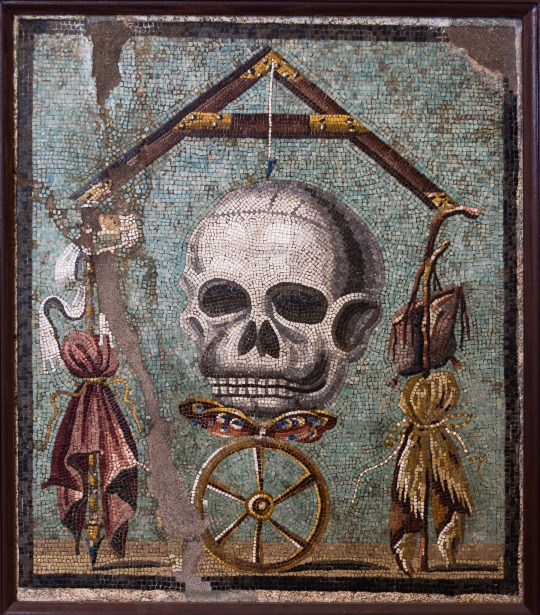
Roman skull mosaic representing the Wheel of Fortune
1st century BC
#ancient art#antiquities#mosaic#roman art#roman mosaic#skulls#skull art#skull aesthetic#ancient culture#ancient people#ancient artist#ancient artifacts#artifacts#historical artifacts#historical art#art history#aesthetictumblr#tumblraesthetic#tumblrpic#tumblrpictures#tumblr art#tumblrstyle#artists on tumblr#aesthetic
441 notes
·
View notes
Photo
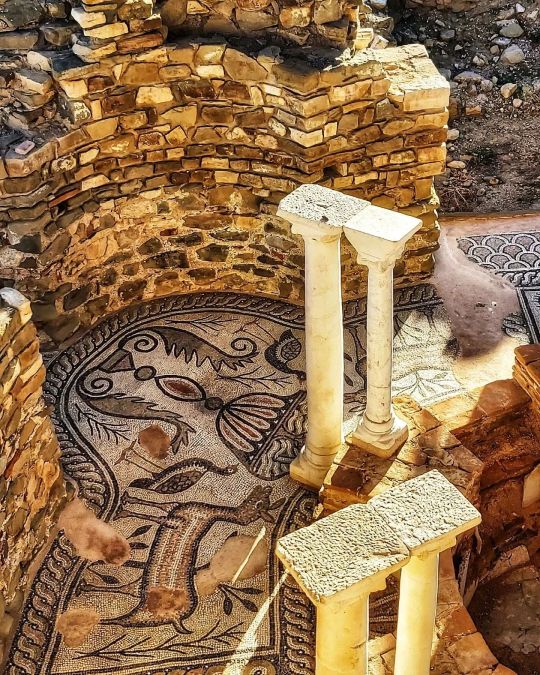
Stobi / Стоби
North Macedonia 🇲🇰
#stobi#macedonia#north macedonia#ruins#ancient ruins#archaeology#mosaic#architecture#antiquity#europe#travel#ruinedchildhood#history#culture#temple#column#ancient rome#roman ruins
2K notes
·
View notes
Text
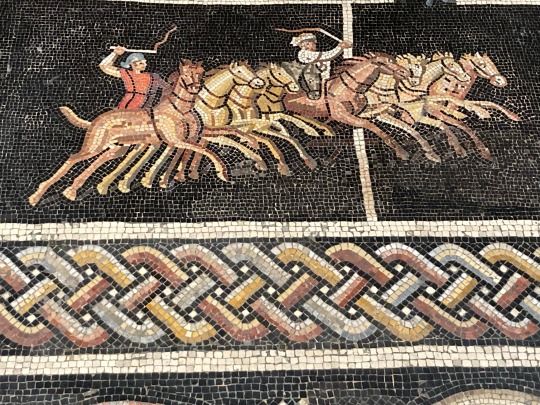
Roman mosaic from the Lyon Lugdunum museum
132 notes
·
View notes
Text




Butrint Archaeological Site, Albania
People have lived in Butrint since 50,000 BC. Greeks from Epirus came and settled there in the 8th century BC, and Butrint became a strong and prosperous city. The Romans took over in 44 BC and made Butrint a colony. Over the centuries, the city became a Christian center of the Byzantine Empire and then was under Frankish, Venetian, and Ottoman control before it was abandoned.
#albania#butrint#unesco#ruins#ancint ruins#ancient greece#ancient rome#architecture#culture#unesco heritage#balkans#travel#wanderlust#antiquity#archaeology#history#ancient ruins#mosaic#columns
37 notes
·
View notes
Text
#Cultural Mosaic#w. michael gear and kathleen o'neal gear#anasazi mysteries#where the basilisk dreams
0 notes
Text
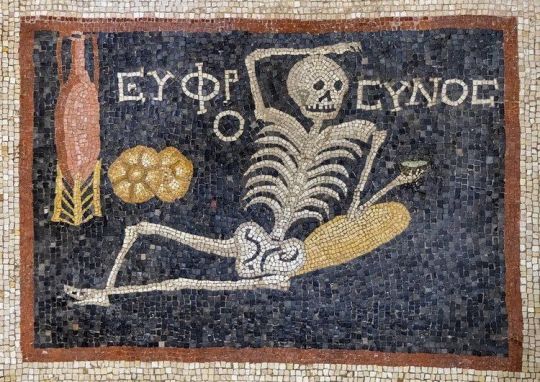
One of the panels of a mosaic of a cheery skeleton uncovered in Turkey in 2016, probably dated to the Late Roman era Antioch. The word can be transliterated as EUPHROSYNOS (cheerful).
#ancient rome#roman empire#ancient history#antioch#skeleton#mosaic#roman era#roman antioch#ancient art#ancient civilisation#ancient civilisations#ancient culture#memento mori
2K notes
·
View notes
Photo


Mosaic from the 4th century BC discovered in Erétria, Euboea island, Greece. The mosaic depicts two satyrs, the older one dancing at the melody played by the younger one. The mosaic was found in a location where more ruins of late classical artistocratic houses have been unearthed as Ancient Erétria was prospering at the time. Based on the dimensions and the shape of the room with this flooring, it was likely an “andronas”, the room of the house which was exclusive to men, where the symposia took place. The classical mansion was abandoned in later times and was turned to a Christian cemetery by the 5th - 6th century AD.
Source
#greece#ancient greece#mosaic#art#greek art#ancient greek art#satyr#greek mythology#classical greek art#eretria#euboea#evia#sterea hellas#central greece#greek islands#greek culture#greek history
71 notes
·
View notes
Text
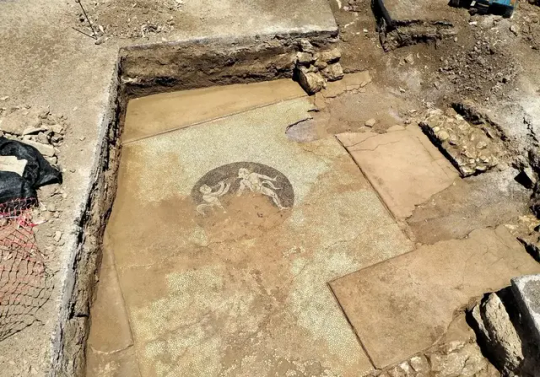
Archaeologists Discover Rare Pebbled Mosaic Featuring Naked Satyrs
Archaeologists excavating in ancient Eretria have discovered a pebbled mosaic floor featuring two naked satyrs.
Eretria was founded on the Greek island of Euboea, emerging as an important polis and trading centre from the 6th and 5th century BC.
The city was described as being involved in several significant historical events. It was listed by Homer in the Iliad as one of the Greek cities which sent ships to fight in the Trojan War.
During the Ionian rebellion against Persia in 499 BC, Eretria and Athens sent aid to their Ionian allies, resulting in the burning of Sardis, the capital of the Persian satrapy of Lydia.
Recent excavations by the Greek Ministry of Culture have unearthed a building near the sanctuary of Daphniforos Apollo, the “Quarter of the Panathenaic Amphorae” and the “House of the Mosaics”.
Within the building interior, archaeologists found a mosaic floor made from natural pebbles, with surviving walls on the south and east sides. The mosaic features a circular black medallion and two naked satyrs, a nature spirit with ears and a tail resembling those of a horse.
Satyrs were considered companions of the god Dionysus, which were thought to inhabit woodlands, mountains, and pastures. The Romans identified satyrs with their native nature spirits, fauns, often shown as a half-human and half-goat creatures.
Excavations also found a raised floor to the north and east sides of the room where reclining couches were likely placed. According to the archaeologists, the room dates from the 4th century BC and served as a banqueting space for celebrations and gatherings.
The area of the building was used as a cemetery during the early Christian era (5th to 6th century AD), where five tombs have been identified within the interior, and five more tombs adjacent to the exterior south wall.
By Mark Milligan.
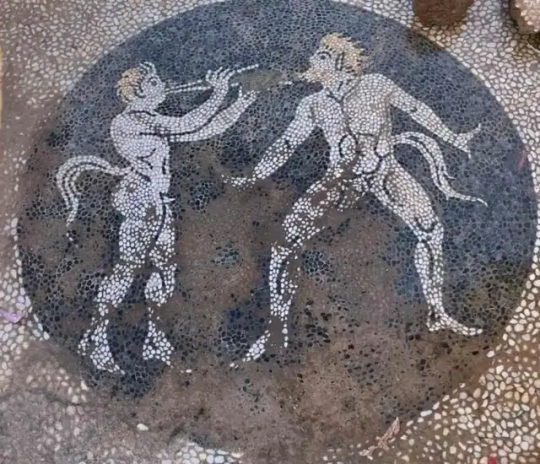
#Archaeologists Discover Rare Pebbled Mosaic Featuring Naked Satyrs#ancient Eretria#Greek island of Euboea#sanctuary of Daphniforos Apollo#mosaic#mosaic floor#ancient artifacts#archeology#archeolgst#history#history news#ancient history#ancient culture#ancient civilizations#ancient greece#greek history#greek art#ancient art
227 notes
·
View notes